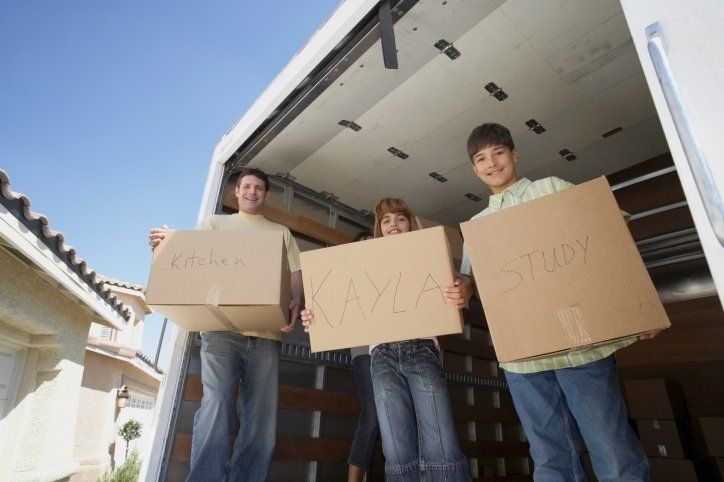Winter in Myrtle Beach: Your Local Guide
We just had our first decent cold snap of the season here in Myrtle Beach, and while it may have been rainy and cold, I'm sure many people were looking for things to do to beat that dang cabin fever. If you're visiting, you may not have a great idea of what the area truly has to offer. And if you're a local, you usually don't treat yourself to the "tourist experience" of exploring our beautiful Grand Strand.
Here are some great ideas to get you started. But first, ask yourself, "Is it chilly, or is it nice and sunny?"
BRRR... It's cold but I want to explore but I want to be warm!!
- Ripley's Aquarium is a great place to explore the many wonders of our oceans, lakes, and streams while avoiding the chill.
- Hollywood Wax Museum: see the many HOT stars up close, but maybe not so personal!
- Wonderworks at Broadway at the Beach: have a fun time trying all kinds of fun experiments, and plenty of indoor activities to keep you busy!
- Ripley's Believe It or Not Odditorium. Right on Ocean Blvd, overlooking the beach, the odditorium is sure to have your imagination reeling!
- Wheels of Yesteryear. Car buff? Head right up 501 to get a glimpse of the past while viewing these gorgeous cars!
- Backstage Mirror Maze. Looking for a real brain game? This will definitely do the trick!
- Legends in Concert: enjoy the musical stylings of Tim McGraw, Elvis Presley, Cher, Adele, and many more brought to you by local tribute artists.
- Medieval Times! The competition is fierce for the hand of the Queen! And the food's great too!
- Murder Mystery Dinner Theater at the House of Blues: become suspects of a murder investigation while still being able to eat your dinner!
- Fun Warehouse. Enjoy laser tag, a roller rink, and even an arcade.
- Go bowling at the new 810 locations, North Myrtle Beach, Myrtle Beach in The Market Common, and in Conway off Highway 501. And be sure to try their gourmet menu full of delicious apps, burgers, pizzas, and yummmmmy desserts!
- Head BACK to the House of Blues for the Sunday all-you-can-eat breakfast buffet and Gospel Brunch. They also have plenty of concerts, so be sure and check their calendar of events!
- Play Team Trivia at any of the locations that host it all up and down the Grand Strand!
- Get an amazing bird's eye view of the area from the Myrtle Beach Skywheel!
- Alligator Adventure has some crazy creatures besides our favorite modern-day dinosaurs!
- Take a nice stroll on the Boardwalk
- Play a round of golf at one of the MANY championship golf courses in the area.
- Head south to Atalaya Castle, or Brookgreeen Gardens, to see gorgeous architecture, sculpture, and gardens.
- Search for shells, and even sharks teeth, when the tide goes out!
- Grab some retail therapy at either on of the Outlet Malls.
- Eat, shop, or meander at the Market Common, Broadway at the Beach, or Barefoot Landing.
- Take a sky-high adventure with Helicopter Adventures!
- Hone your golf swing at TopGolf
- Catch a fishing charter with Voyager Fishing Charters, Captain Smiley Fishing Charters, or Lowcountry Fishing Charters
- Try the local cuisine at the Marshwalk in Murrells Inlet
- Visit Warbird Park in The Market Common to pay respects and tributes to the men and women who lived in the MB area as they served their country.
- North Myrtle Beach's Drive-Thru "The Great Christmas Light Show!" From November 25th thru December 30th (closed Thanksgiving and Christmas Days) you can drive from the comfort of your nice toasty car, thru a 1.5 mile light show that will have you oooh-ing and aaah-ing like it's the 4th of July!
- After the journey through the light show, you can park your car and visit Santa’s Village where you can enjoy hot chocolate and s’mores, get an up close look at the lights on the Santa Express Train Ride, go through the Chris-maze and, of course, meet Santa! Santa’s Village is open Friday, Saturday and Sunday only from November 29-December 15. Opens nightly December 19-30 (closed Thanksgiving and Christmas Day). More info on hours and admission here.
- Brookgreen Garden's "Nights of a Thousand Candles!" Every year, Brookgreen Gardens becomes an enchanted Winter Wonderland, with more than 2,700 candles lit all over the garden! There's hot cocoa, warm cider, and even wine throughout, and holiday music and carolers for your musical enjoyment! There's even a delicious assortment of gourmet food to try to help warm your bones! More info about hours and admission, as well as their delicious menu here.
Dusty Rhodes Properties is the Best Realtor in Myrtle Beach! We do everything in our power to help you find the home of your dreams. With experience, expertise, and passion, we are the perfect partner for you in Myrtle Beach, South Carolina. We love what we do and it shows. With more than 22 years of experience in the field, we know our industry like the back of our hands. There’s no challenge too big or too small, and we dedicate our utmost energy to every project we take on. We search thousands of the active and new listings from Aynor, Carolina Forest, Conway, Garden City Beach, Longs, Loris, Murrells Inlet, Myrtle Beach, North Myrtle Beach, Pawleys Island, and Surfside Beach real estate listings to find the hottest deals just for you!
Share





